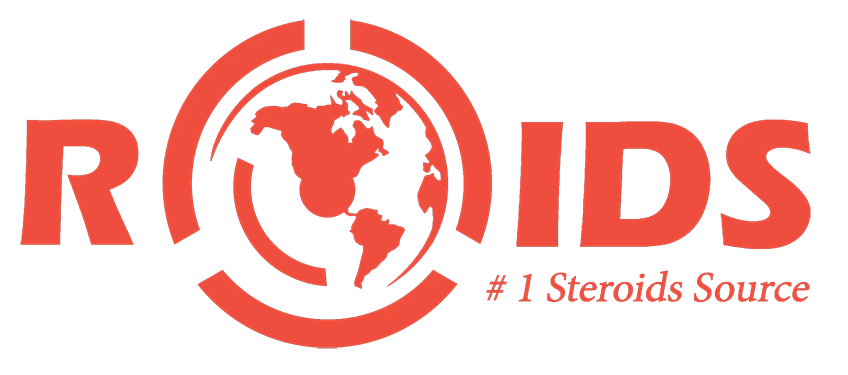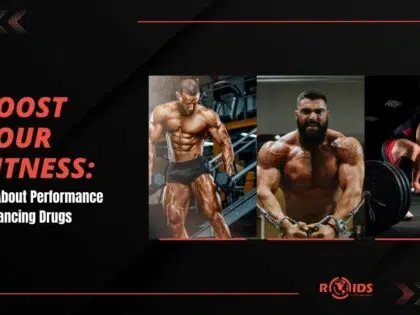Anabolic Agents: Boosting Athletic Performance and Muscle Mass

Anabolic Agents: Boosting Athletic Performance and Muscle Mass
Welcome to our blog post on anabolic agents – the powerful substances that have gained popularity in the world of sports and fitness for their ability to boost athletic performance and muscle mass. In this article, we will delve into what anabolic agents are, how they work, commonly used ones, potential risks and side effects, legal and ethical considerations, as well as alternative options. Join us as we explore the fascinating world of anabolic agents!
What are Anabolic Agents?
Anabolic agents are substances that enhance the body’s ability to build muscle and improve athletic performance. These agents often include hormones such as testosterone, which play a crucial role in muscle development. By stimulating protein synthesis and increasing nitrogen retention, anabolic agents promote the growth of lean muscle mass, leading to greater strength and power in athletes.
Definition and Explanation
Understanding the concept of anabolic agents is essential for anyone looking to enhance their athletic performance and build muscle. Anabolic agents are substances that promote the growth and development of muscles by increasing protein synthesis in the body. These agents often act as hormones, such as testosterone, which play a crucial role in regulating muscle growth. Anabolic agents have a direct impact on the body’s physiology, particularly on muscle tissue.
They stimulate an increase in protein production within cells, leading to greater muscle mass and strength. By enhancing nitrogen retention and promoting cell division, these agents facilitate faster recovery from intense workouts and allow athletes to push their limits further. It is important to differentiate between anabolic and catabolic processes when discussing these agents’ effects on the body. While anabolism refers to building up complex molecules like proteins from simpler ones, catabolism involves breaking down complex molecules into smaller units for energy release. Anabolic processes driven by hormone-like substances like testosterone promote muscle growth, while catabolic processes typically lead to muscle breakdown or loss.
Types of Anabolic Agents
An overview of synthetic steroids as anabolic agents:
- Synthetic steroids, such as testosterone derivatives, are commonly used to enhance muscle growth and athletic performance.
- These compounds mimic the effects of natural hormones in the body, promoting protein synthesis and increasing muscle mass.
- However, their use comes with potential side effects like hormonal imbalances and liver damage.
Exploring peptide hormones and their role in muscle growth:
- Peptide hormones play a crucial role in regulating various physiological processes, including muscle development.
- Some peptides stimulate the production of human growth hormone (HGH), which can aid in increasing lean muscle mass.
- Due to their targeted action on specific receptors, peptide hormones may offer a safer alternative to synthetic steroids.
The potential benefits and risks of selective androgen receptor modulators (SARMs):
- Selective Androgen Receptor Modulators (SARMs) selectively bind to certain receptors involved in skeletal muscle function without affecting other tissues like the prostate or hair follicles.
- SARMs have gained popularity among athletes for their ability to promote significant gains in strength and lean body mass with fewer side effects than traditional anabolic steroids.
However, concerns remain regarding long-term health risks associated with SARM use.
How Do Anabolic Agents Work?
Anabolic agents work by stimulating protein synthesis in the body, leading to increased muscle growth and improved athletic performance. These agents typically bind to specific receptors in muscle cells, activating signaling pathways that promote the production of new proteins. This increase in protein synthesis results in enhanced muscle hypertrophy and strength gains. Additionally, anabolic agents may also help reduce muscle breakdown, further contributing to overall muscle mass development.
Mechanism of Action
Increased protein synthesis, inhibition of catabolic processes, and enhanced nitrogen retention are the key mechanisms of action behind anabolic agents. These compounds work by promoting the growth and repair of muscle tissue, leading to increased muscle mass and improved athletic performance.
- Increased protein synthesis:
Anabolic agents stimulate the body’s ability to synthesize proteins, which are essential for muscle growth and repair. - Inhibition of catabolic processes:
These agents help prevent or minimize the breakdown of muscle tissue that occurs during intense physical activity or periods of calorie deficit. - Enhanced nitrogen retention:
Anabolic agents promote a positive nitrogen balance in the body, allowing for greater utilization of dietary protein for muscle development.
Benefits of Anabolic Agents
Improved muscle mass and strength, faster recovery from intense workouts, and increased red blood cell production are some of the key benefits of anabolic agents. These substances help athletes enhance their physical performance by increasing protein synthesis and promoting muscle growth. By supporting the repair and regeneration of damaged muscles, anabolic agents enable athletes to train harder and more frequently, leading to greater gains in muscle mass and strength. Additionally, these compounds stimulate the production of red blood cells, improving oxygen delivery to muscles during exercise.
- Enhanced muscle mass
- Increased strength
- Quicker recovery after intense training sessions
- Higher red blood cell count for improved oxygenation
Commonly Used Anabolic Agents
Steroids, a commonly used anabolic agent, are synthetic variations of the hormone testosterone. They work by increasing protein synthesis in the body, leading to enhanced muscle growth and athletic performance. Testosterone supplements are another type of anabolic agent that athletes often use to boost their muscle mass and strength. These supplements contain natural or synthetic forms of testosterone and can help improve recovery time, increase bone density, and enhance overall physical performance.
Selective Androgen Receptor Modulators (SARMs) are a newer class of anabolic agents that target specific receptors in the body to promote muscle growth without some of the side effects associated with traditional steroids. SARMs have gained popularity among athletes looking for effective ways to increase lean muscle mass and improve athletic performance.
Steroids
Types of steroids include anabolic agents, which enhance muscle growth and athletic performance. These agents work by binding to androgen receptors in the body, stimulating protein synthesis and increasing nitrogen retention. However, their use is not without potential side effects such as liver damage, cardiovascular problems, hormonal imbalances, and psychological disturbances. It is crucial for individuals considering steroid use to weigh the benefits against these risks before making a decision.
Testosterone Supplements
Benefits of testosterone supplementation include increased muscle mass, improved athletic performance, and enhanced libido. Different forms of testosterone supplements are available, including injections, gels, patches, and pellets. When considering usage, it is important to consult with a healthcare professional to determine the appropriate dosage and monitor potential side effects.
Selective Androgen Receptor Modulators (SARMs)
Selective Androgen Receptor Modulators (SARMs) are a class of anabolic agents that selectively target the androgen receptors in the body. Some popular SARMs on the market include Ostarine, Ligandrol, and Testolone. These compounds offer benefits such as increased muscle mass, improved athletic performance, and enhanced recovery. However, it’s important to note that SARMs also come with potential risks and limitations, including hormonal imbalances, liver toxicity, and lack of long-term safety data.
Potential Risks and Side Effects
Anabolic agents, while they can enhance athletic performance and increase muscle mass, come with potential risks and side effects. On a physical level, the use of these agents can lead to liver damage, cardiovascular complications, and hormonal imbalances. Psychological and emotional effects may include heightened aggression, mood swings, and increased risk of dependency on the substance. It is crucial for individuals considering the use of anabolic agents to fully understand these risks before making any decisions.
Physical Side Effects
Liver damage, cardiovascular complications, and hormonal imbalances are potential physical side effects associated with the use of anabolic agents. Prolonged usage of these substances can result in liver dysfunction and possible long-term damage to this vital organ. Additionally, the cardiovascular system may be negatively impacted, leading to an increased risk of heart-related problems such as high blood pressure and cardiac abnormalities. Moreover, hormonal imbalances caused by anabolic agents can disrupt normal bodily functions and contribute to a range of health issues.
1. Psychological and Emotional Effects
Mood swings and irritability can be common side effects of using anabolic agents. Fluctuations in emotions may occur, leading to sudden changes in mood that can range from euphoria to anger or sadness.
- Increased aggression and hostility are also potential consequences of anabolic agent use. This heightened aggressiveness might manifest as verbal or physical confrontations with others, making it important to monitor these behaviors closely.
- Depression and anxiety may develop as a result of using anabolic agents. These conditions can contribute to feelings of sadness, hopelessness, excessive worry, and difficulty concentrating.
As the use of anabolic agents has become more prevalent among athletes seeking enhanced performance and muscle growth, understanding the psychological effects is crucial. Mood swings, increased aggression, and depression/anxiety are significant concerns that should be addressed when considering the use of these substances.
2. Legal and Ethical Considerations
When it comes to the use of anabolic agents in sports, strict regulations are in place to ensure fair competition. These regulations prohibit the use of performance-enhancing substances and impose penalties on athletes found guilty of doping. Athletes must be aware of these rules and adhere to them to maintain the integrity of their sport.
The use of anabolic agents raises ethical concerns due to the potential for unfair advantages and health risks associated with their usage. Athletes who use these substances may gain a competitive edge over their opponents, compromising the fairness and spirit of competition. Moreover, athletes should consider the long-term consequences on their physical well-being before resorting to such methods. It is crucial for individuals involved in sports to carefully navigate this ethical dilemma while striving for excellence within legal boundaries.
3. Regulations on Anabolic Agents in Sports
WADA guidelines serve as the cornerstone for regulating anabolic agents in sports. These guidelines provide a comprehensive list of prohibited substances and methods, ensuring fairness and protecting athletes’ health. Testing protocols and procedures are implemented to detect the use of these banned substances, maintaining the integrity of competitive sports by deterring doping practices.
4. Ethical Dilemmas Surrounding the Use of Anabolic Agents
Unfair advantage in competition arises when athletes use anabolic agents to enhance their performance, giving them an edge over their competitors. This creates a moral dilemma as it undermines the principles of fair play and equal opportunity. The use of anabolic agents poses significant health risks and long-term consequences. Athletes may experience adverse effects on their cardiovascular system, liver function, and hormonal balance. Moreover, the temptation to achieve short-term gains through these substances may result in neglecting proper training techniques and overall well-being.
Role models within sports have a moral responsibility to uphold integrity and inspire others positively. When prominent athletes engage in the use of anabolic agents, they send a conflicting message to their fans and aspiring athletes worldwide. The ethical question arises: should individuals who cheat be idolized or held accountable for compromising the values upheld by sportsmanship?
Alternatives to Anabolic Agents
While anabolic agents may provide a significant boost to athletic performance and muscle mass, there are alternative methods that can achieve similar results without the potential risks and side effects. These alternatives include implementing proper nutrition and training techniques tailored to specific goals. By focusing on nutrient-dense foods and optimizing workout routines, individuals can enhance their athletic performance and increase muscle mass in a safe yet effective manner.
In addition to natural methods, supplements can also play a role in boosting athletic performance and aiding muscle growth. Certain supplements, such as creatine monohydrate or beta-alanine, have been shown to improve strength and endurance levels when used correctly. However, it is important to note that these supplements should always be used under professional guidance to ensure proper dosage and avoid any adverse effects on health.
Natural Methods to Boost Athletic Performance and Muscle Mass
Proper nutrition is essential for boosting athletic performance and muscle mass. Focus on consuming balanced meals that include adequate protein intake to support muscle growth and repair. Combine regular exercise, including resistance training and cardiovascular activities, to enhance overall fitness levels. Additionally, prioritize adequate rest and recovery periods to allow the body time to repair and rebuild muscles.
- Emphasize balanced meals with adequate protein intake
- Incorporate resistance training and cardiovascular activities into your exercise routine
- Allow sufficient rest and recovery periods for muscle repair
Supplements and Nutritional Strategies
Protein supplements play a crucial role in muscle repair and growth. When it comes to choosing between whey or casein protein, consider your specific goals. Whey protein is quickly absorbed, making it ideal for post-workout recovery and promoting muscle synthesis. On the other hand, casein protein provides a slow-release of amino acids, which can be beneficial for sustained muscle building.
Creatine supplementation offers significant benefits in enhancing strength, power, and endurance performance. By increasing phosphocreatine stores in the muscles, creatine enhances ATP production during high-intensity exercise. This allows for increased energy availability and improved athletic performance across various sports disciplines.
If you’re looking to reduce fatigue during high-intensity exercise sessions, beta-alanine supplementation should not be overlooked. Beta-alanine increases intramuscular carnosine levels which helps buffer acid build-up within the muscles during intense workouts. By reducing fatigue, this supplement allows athletes to push harder and achieve optimal results in their training sessions.
Remember that incorporating these supplements into your nutritional strategy can provide an added advantage on your fitness journey as you strive towards boosting athletic performance and gaining lean muscle mass.
Conclusion
In conclusion, anabolic agents play a significant role in enhancing athletic performance. These compounds have been shown to increase muscle mass and strength, providing athletes with a competitive edge. However, it is essential to consider the potential risks and side effects associated with their use.
To ensure safe and responsible use of anabolic agents, individuals should prioritize proper dosage and administration methods. Regular monitoring of hormone levels and health markers can also help mitigate adverse effects. It is crucial for athletes to make informed decisions regarding the use of these substances while prioritizing their long-term well-being.
Overall, anabolic agents offer undeniable benefits in terms of athletic performance improvement and muscle development. However, cautious usage combined with thorough understanding of potential risks is vital for maintaining optimal health in the pursuit of enhanced physical capabilities.




